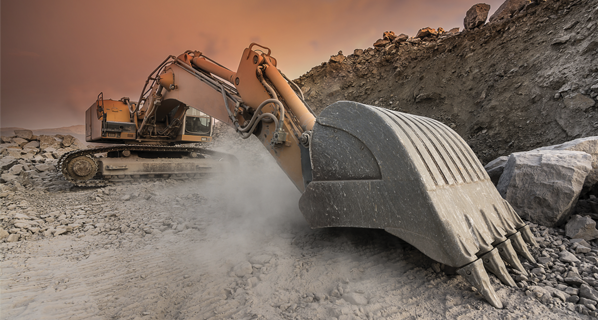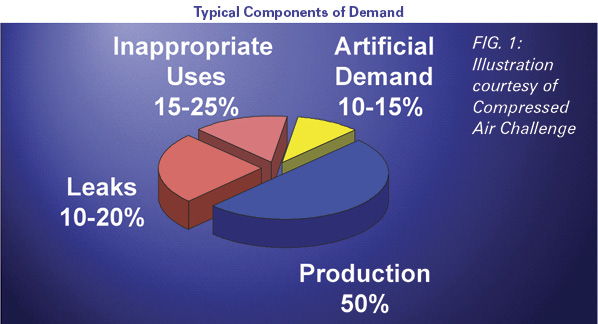Hydraulic Products and the Replacement Market
By P.K. Guha

Hydraulic applications are here to stay, contrary to the belief that the electric industry will be a threat. The electric industry has become more of a partner to hydraulics. Electrics and electronics have become the brain to what hydraulics accomplish in this digital world, and future electro-hydraulic applications will only likely grow at a rapid pace.
Within a given envelope size, the hydraulic elements, particularly pumps and motors, are far more compact and smaller than the electric prime mover (motor) in size, shape, and weight. In addition, in the area of weight-to-horsepower ratio, hydraulic products score ahead of electric prime movers.
A Comparison Between Same Size Horsepower Electric And Hydraulic Motors
In today’s industry, all hydraulic products are much more compact and versatile, with infinite features to meet with application demands. The prime movers in hydraulics, particularly the pumps, have been at the pinnacle of design improvements. By comparison, the electric industry has also moved way up, but more towards control than the prime movers. Electrical proportional controls in this digital world could make servo controls a design of long past.
However, the hydraulic industry and electric industry have an entirely different kind of replacement market potential due to the following factors:
- Duty cycle
- Frequency of use
- Usage pattern
- Maintenance needs
- Use and abuse
Considering the above factors, and there may be a few more hidden ones, electric maintenance needs less attention than hydraulic elements, particularly pumps and motors, and more so in mobile applications such as construction and agricultural equipment. Therefore, hydraulic elements need constant attention as they affect the productivity of the given machines and equipment if not attended to correctly in a timely matter.
Electric products, particularly electric motors, are a commodity product and are a century-old technology, which is understood and repaired by every repair house in the nook and corner of the globe. Not so with hydraulic pumps, motors, and other elements. Expert and agile attention is always required to run and maintain a hydraulic application, of any nature.
As always, hydraulic product replacement market potential consists generally of three categories of groupings:
- Current design momentum products with at least 1-2 years in the field.
- All pumps in current production ranging over 12,000 to 15,000 actual working hours.
- All classic and obsolete products no longer manufactured.
In the 21st century, we are seeing an increase in oil hydraulic applications in every wake of our engineering marvels and industries. We will continue to see this progress in many more years to come, considering the current trend.
With the advent of our digital world and introduction of new digitally controlled sensors and computer chips, the hydraulic pumps and motor controls are only going to be more sophisticated, reliable, and less failure-prone. However, when they fail, they need a quick replacement to maintain the chain of productivity. The field population of most dynamic hydraulic products (pumps and motors) is insurmountable and will skyrocket in the days and years ahead as the industrial population grows.
Therefore, it is time for all hydraulic product manufacturers to take stock of these potential opportunities and serve the end-user to maintain a solid industry productivity and ground for revenue and earning.
When an excavator or an injection-molding machine is down for want of a pump, motor, or any other hydraulic element, the machines are not excavating the earth and molding an automotive body or plastic bucket. This results into a colossal loss in production and productivity. This, in essence, even affects the nation’s GDP.
This is where the product manufacturers must reach out to the end-user through the chain of their distributors, sub-distributors, their own repair houses, industry repair houses, and retailers to the end-user within less than 24 hours anywhere in the world.
Currently, the majority of hydraulic product manufacturers are happy to be servicing the OEMs (equipment and machine manufacturers). They primarily leave the end-user service support factors either with their distributors or the equipment manufacturers. This is a good strategy, as long as the supply flow and availability of the replacement products and parts thereof are available instantaneously. This is where there is a big hole.
In reality, given the huge size of the replacement market potential, the availability of genuine and quality replacement products/parts are far below the end-user’s needs. This has created an insurmountable void, which resulted in a score of equivalent “will-fit” hydraulic product manufacturers around the world, as well as having mushroomed numerous organized and unorganized repair houses, all across the globe, to fill the void created by the original hydraulic product manufacturers.
Some of these “will-fit” manufacturers, as well as “non-manufacturer repair houses” are good and know what they are doing. Therefore, one simply cannot discard them as substandard product and repair houses.
“Will-fit” sources are a century-old phenomenon and so is the word “repairing.” These services and activities in the hydraulic world are there to stay for a long haul. How strategically the original product manufacturers and OEMs work around these bottlenecks to gain their own created market share is dependent upon how service-oriented and hungry they are and how well they protect their patents and their willingness to serve the end-users.
The equivalent products may or may not always be working like the original genuine product, but they are doing a great service to the industry. In a way, they are keeping the productivity of the industry going (even if it is at a lower efficiency) and helping the industry from a “stand-still” situation. Nevertheless, when lower-efficient hydraulic products are reused, there could be a possibility of higher energy consumption. This is a factor that product manufacturers and OEMs always should keep in mind while planning how to serve the end-users and how to create a better market share for themselves.
The hydraulic product replacement market will only be growing in the future; therefore, product manufacturers and equipment manufacturers should take stock of the situation and adopt a new productive approach to reap the benefits of this humongous replacement market potential.
Distributors for both the product and equipment manufacturers are a direct link to the service market. Each of these distributors must have a reasonably well-equipped service repair shop. If a product manufacturer does not have such qualified distributors, they need to be groomed or an equivalent arrangement could be made to ensure that the service revenue comes to the product/equipment manufacturers, even if it is through the “will-fit” centers. The idea and planning of service revenue should start at the product design stage. The life and mortality of the product should be taken into account at the production and inventory planning point.
There are lots of different ways the above could be achieved. The following are a few:
- Constant replacement aftermarket analysis
- Better production planning of a given type of product
- Coherence between product and equipment manufacturers, at least the key big ones
- Establishment of one main central service center
- Continuous training of distributor repair houses
- A relationship with independent retail repair houses across the globe, through the authorized distributor repair houses.
All of the above will bring about the following rapid results, as well as meeting the demands of the growing end-users and replacement aftermarket.
- Lower margins by selling to OEMs will be greatly compensated, which is good for market stock value for the original manufacturers.
- Original product manufacturers have created the replacement market with the help of the equipment manufacturers. They own this potential revenue.
- End-users are satisfied with quick service and better quality as well as lower downtime.
- Better coordination exists between product and equipment manufacturers, as well as between authorized distributors and the industry’s retail repair shops/ freelancers.
Cultivation of the hydraulic replacement market is a global phenomenon, and as such, this needs to be handled that way to reap the potential benefit. The most important factor in servicing this growing hydraulic replacement market (the end-user) is to reach out to the end-users, as fast as you can, with as much as you have, just the way many actual wars are won these days at the Battlefront.
For more information, contact P.K. Guha at pguha@aol.com.








You mentioned that hydraulic pumps and motors tend to be the things that need fixing. Are there any preventive measures that can be taken to add to the life of the hydraulic motors? My father is having some issues with one of the hydraulic components on his tractor and is trying to figure out why it isn’t working 100%.